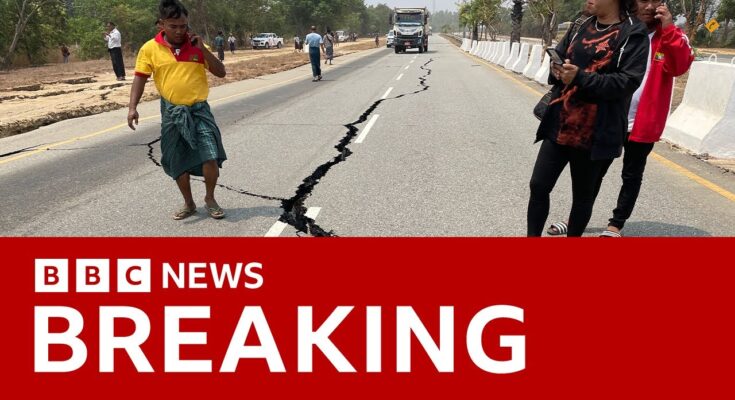A devastating 7.7-magnitude earthquake struck central Myanmar on March 28, 2025, causing widespread destruction and loss of life. The quake’s epicenter was near Mandalay, the nation’s second-largest city, and tremors were felt as far as Bangkok, Thailand.
In Myanmar, the death toll has risen to at least 1,644, with thousands more injured and hundreds still missing. The earthquake severely damaged infrastructure across six regions, including bridges, roads, hospitals, and monasteries. Rescue operations are ongoing but are hampered by damaged infrastructure and widespread power and communication outages. The military junta has declared a state of emergency and is appealing for international aid.
Neighboring countries also felt the impact. In Bangkok, Thailand, a high-rise building under construction collapsed, resulting in several fatalities and numerous injuries. The tremors caused widespread panic, leading to the temporary shutdown of the city’s rapid transit systems.
The international community has responded with offers of assistance. India dispatched nearly 15 tonnes of relief material, including tents, sleeping bags, blankets, water purifiers, solar lamps, generator sets, and essential medicines. China, Russia, and other countries have also begun sending rescue teams and supplies to aid in relief efforts.
The United Nations allocated $5 million for recovery efforts, while Pope Francis extended prayers for the victims and expressed his spiritual closeness to all affected by the tragedy.
As rescue operations continue, authorities fear the death toll may rise further. The earthquake has exacerbated existing challenges in Myanmar, a nation already grappling with political turmoil and infrastructural deficiencies. The disaster underscores the urgent need for coordinated international assistance to support the affected populations and rebuild the devastated regions.
